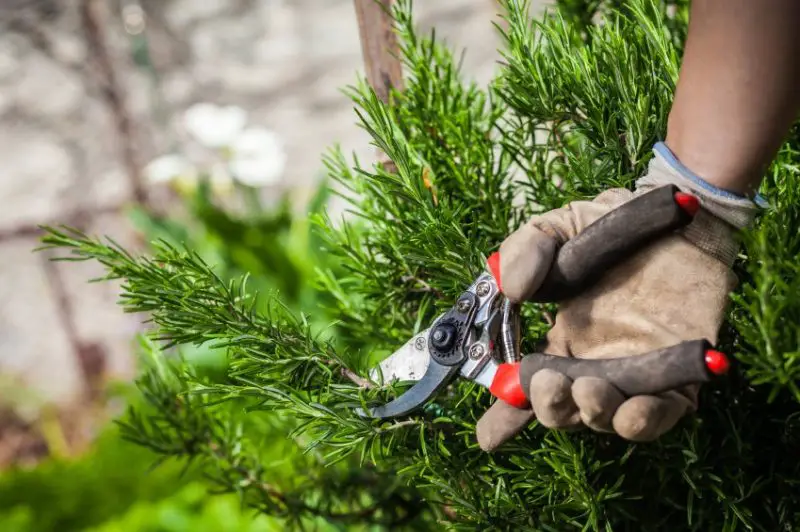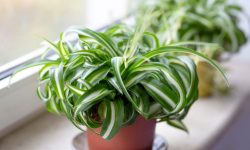Rosemary is a versatile and aromatic herb prized for culinary, medicinal, and decorative uses. Thriving in gardens and containers, it offers fragrant leaves that enhance dishes, teas, and even homemade beauty products. Proper pruning is key to maintaining healthy growth, maximizing leaf production, and ensuring a bushy, attractive appearance. Without regular trimming, rosemary can become leggy, woody, or sparse, reducing both visual appeal and leaf quality. Learning the correct pruning techniques allows gardeners to shape the plant while promoting vigor, encouraging new shoots, and prolonging its productive lifespan.
Pruning rosemary is not just about aesthetics; it directly influences the plant’s health and flavor. Strategic trimming enhances airflow and light penetration, preventing disease and pest infestations. By cutting at the right time and using proper methods, gardeners can stimulate dense growth, preserve essential oils, and enjoy a continuous supply of aromatic leaves. This comprehensive guide will explore when, how, and why to prune rosemary, offering practical tips to keep your herb thriving, productive, and visually appealing throughout the year.
Understanding Rosemary Growth Patterns

Rosemary is an evergreen shrub with a naturally woody structure that produces soft, green shoots at the tips. Understanding its growth patterns is essential for effective pruning. New growth emerges primarily from the ends of branches, while older stems gradually become woody and less productive. By observing these patterns, gardeners can identify which areas to trim to stimulate fresh growth and maintain a balanced, bushy plant. Recognizing the difference between tender shoots and mature woody stems helps prevent unnecessary damage and encourages healthy branching.
Seasonal growth variations also influence pruning decisions. In spring and summer, rosemary grows most vigorously, producing abundant new shoots suitable for harvesting or shaping. During fall and winter, growth slows, and pruning should be minimal to avoid stressing the plant. Monitoring the plant’s growth cycle allows gardeners to time their trimming for maximum effectiveness, promoting strong, aromatic foliage while preserving energy in older stems for sustained vitality.
Additionally, understanding the plant’s natural habit prevents common mistakes such as over-pruning or cutting into old wood, which may hinder recovery. Rosemary thrives when branches are allowed to extend slightly before trimming, encouraging fuller growth and preventing a sparse appearance. By studying growth patterns and adapting pruning techniques accordingly, gardeners can maintain visually appealing, healthy, and productive rosemary plants that provide a continuous supply of flavorful leaves throughout the year.
Tools and Equipment Needed for Pruning Rosemary
Having the right tools is crucial for effective and safe rosemary pruning. Sharp pruning shears or scissors are essential for making clean cuts, preventing jagged edges that can invite disease. Bypass pruners are preferable over anvil types, as they provide smoother cuts and reduce stress on woody stems. Using clean, well-maintained tools ensures the plant remains healthy and minimizes the risk of infection or damage. Regularly sterilizing tools with rubbing alcohol or a mild bleach solution prevents the spread of pathogens between plants.
In addition to cutting tools, gardeners may require gloves to protect hands from the shrub’s stiff, aromatic needles. Gloves also prevent skin irritation from repeated contact with essential oils. For larger or older rosemary plants, long-handled pruners or loppers may be necessary to reach upper branches safely. A small brush or cloth can help remove debris from tools, maintaining hygiene and prolonging their lifespan. Using tools suited to the plant’s size and structure ensures clean, precise cuts that promote bushier growth.
Preparation also involves setting up a safe, organized workspace. Having a container or bag nearby to collect trimmings keeps the area tidy and prevents accidental damage to the plant. Proper positioning and lighting improve visibility, allowing more accurate pruning. Sharp tools, thoughtful preparation, and attention to detail reduce mistakes, allowing precise cuts that encourage robust growth. Combining appropriate equipment with careful planning enhances both aesthetics and productivity, ensuring a long-lasting, vigorous, and aromatic rosemary plant.
Choosing the Right Tools for Pruning Rosemary
Choosing the right tools for pruning rosemary is essential for maintaining plant health and encouraging robust growth. Sharp, well-maintained pruning shears allow for precise cuts, reducing stress on stems and preventing tearing. Bypass pruners are particularly effective because they slice cleanly through woody branches without crushing them. For smaller, tender shoots, a pair of fine scissors or snips works best, while long-handled pruners are ideal for reaching higher branches or larger plants. Using inappropriate or dull tools can damage the plant, slow recovery, and increase susceptibility to pests and diseases.
Proper care and sterilization of tools are equally important. Wiping blades with rubbing alcohol before and after use eliminates harmful pathogens, preventing disease transmission between plants. Regular sharpening ensures smooth, effortless cuts, promoting faster healing and preserving the plant’s aromatic quality. Gardeners should also inspect tools for rust or loose parts, as these issues can compromise cutting accuracy and plant safety. Maintaining equipment not only improves pruning efficiency but also supports the long-term health and productivity of rosemary plants.
Investing in the right tools and caring for them appropriately has a direct impact on both plant vitality and harvesting success. Clean, precise cuts reduce stress, encourage bushy, compact growth, and help the plant produce more flavorful, aromatic leaves. By combining correct tool selection, routine maintenance, and careful cutting practices, gardeners can ensure their rosemary remains strong, productive, and visually appealing. Properly pruned rosemary thrives year-round, offering continuous culinary, decorative, and aromatic benefits without unnecessary plant stress.
When to Prune Rosemary for Optimal Growth
Timing is crucial when pruning rosemary to ensure vigorous growth and a bushy shape. The best period to perform major pruning is in late spring or early summer, after new growth has emerged. Pruning during this time encourages the plant to produce fresh shoots and leaves while minimizing the risk of frost damage. Avoid heavy cutting during fall or winter, as the plant’s growth slows, and trimming at this time may stress it.
Light, maintenance pruning can be done throughout the growing season to shape the plant and remove any dead or damaged branches. Removing faded or brown stems prevents disease and allows more sunlight to reach healthy foliage. Seasonal observation is essential; pruning at the right moment improves air circulation, reduces pest infestations, and promotes strong, aromatic leaves. By understanding the growth cycle, gardeners can plan their cuts to stimulate maximum regeneration and maintain a visually appealing structure.
In addition, timing affects both leaf quality and plant longevity. Young, tender shoots contain the highest concentration of essential oils, making them ideal for culinary use. Pruning too late in the season can reduce leaf flavor and overall productivity. Observing natural growth rhythms and adjusting pruning schedules ensures a continuous supply of aromatic rosemary. Consistent, timely pruning maintains plant health, encourages dense branching, and results in a resilient herb that thrives year-round, providing both beauty and functionality in the garden.
Step-by-Step Pruning Techniques for Rosemary
Pruning Young Rosemary Plants
Pruning young rosemary plants is essential to establish a strong framework and encourage bushy growth. Begin by identifying the main stems and removing weak, damaged, or inward-growing shoots. Trim the top growth lightly, cutting just above a pair of healthy leaves to stimulate lateral branching. Avoid cutting into woody stems, as these are less likely to produce new growth. Regular, gentle pruning during the first year helps prevent legginess and encourages dense foliage that supports long-term plant health.
In addition, consistent attention after trimming is crucial. Keep tools clean and sharp to make precise cuts and prevent infection. Monitor the plant for signs of stress, such as wilting or yellowing leaves, and adjust watering accordingly. Over time, this careful pruning practice allows young rosemary to develop a sturdy base and abundant aromatic leaves. By following these steps, gardeners can cultivate healthy, productive plants suitable for both containers and garden beds.
Pruning Mature Rosemary Plants
Pruning mature rosemary focuses on maintaining structure, removing old wood, and encouraging new shoots. Identify woody stems that have stopped producing growth and trim selectively to promote fresh development. Cut back branches by no more than one-third during major pruning sessions to avoid shocking the plant. Remove dead, diseased, or crossing branches that hinder airflow and light penetration. Light pruning of tip growth throughout the season helps maintain bushiness and shape.
Timing and moderation are essential for mature plants. Avoid heavy pruning during cold months to reduce stress, and use sharp, clean tools to ensure precise cuts. Regular observation ensures that the plant remains healthy and productive, with dense aromatic foliage. By carefully shaping mature rosemary, gardeners can maximize leaf yield, maintain aesthetic appeal, and enjoy a resilient, flavorful herb for culinary and decorative purposes throughout the year.
Common Mistakes to Avoid When Pruning Rosemary
Over-Pruning or Cutting Too Much
One of the most frequent mistakes when pruning rosemary is removing too much foliage at once. Taking large amounts of leaves or cutting into old woody stems can shock the plant, slow growth, and reduce its aromatic quality. Over-pruning weakens the plant’s structure and leaves it more susceptible to pests and disease. It can also result in sparse, leggy growth, which diminishes both visual appeal and leaf production. Many gardeners mistakenly believe heavy pruning stimulates growth, but excessive cutting often stunts the plant and reduces future harvests.
To avoid this, prune gradually and selectively, removing only the top third of the plant at any given time. Focus on trimming new, tender shoots while leaving older, established branches intact. Use clean, sharp tools to prevent tearing and infection, and monitor the plant for stress after cutting. Consistent, light pruning encourages bushiness without compromising health. By understanding the plant’s growth cycle, using moderation, and observing post-pruning recovery, gardeners can maintain dense, vigorous, and productive rosemary, ensuring abundant aromatic leaves throughout the year for culinary and decorative use.
Pruning at the Wrong Time
Pruning rosemary at inappropriate times is another common error. Heavy trimming during fall or winter can stress the plant because growth slows in colder months. Removing too much foliage during dormant periods prevents the plant from storing energy for future growth and can make it vulnerable to frost or disease. Many gardeners also prune too early in spring before the plant has fully awakened, which may delay new growth and reduce leaf quality.
The key is to schedule major pruning sessions during spring or early summer when the plant is actively growing. Light maintenance pruning can be done throughout the growing season to shape the plant, remove dead branches, and enhance airflow. Correct timing ensures cuts stimulate regeneration, preserve essential oils, and encourage strong, bushy growth. Gardeners who follow seasonal schedules maintain healthy, visually appealing rosemary with continuous leaf production, balancing aesthetics, flavor, and plant longevity.
Aftercare and Maintenance Following Pruning
Watering and Feeding After Pruning
After pruning rosemary, proper watering and feeding are essential to support recovery and encourage new growth. Newly trimmed branches are more vulnerable to dehydration, so maintaining consistent soil moisture is crucial. Water the plant deeply at the base, allowing moisture to reach the roots without saturating the soil. Well-draining soil ensures that oxygen reaches the root system, preventing rot and supporting strong regrowth. Avoid watering foliage excessively, as damp leaves can encourage fungal infections.
In addition to watering, light fertilization can stimulate vigorous regrowth. Use a balanced, diluted liquid fertilizer to provide essential nutrients without overwhelming the plant. Avoid applying high doses immediately after extensive pruning, as this can stress rosemary and slow recovery. Monitor the plant regularly, adjusting water and nutrients according to weather, soil type, and plant size. Mulching around the base helps retain moisture and regulate temperature. With careful aftercare, rosemary quickly recovers, producing dense, aromatic foliage that is ideal for culinary, decorative, or medicinal uses throughout the year.
Monitoring and Shaping Post-Pruning
Consistent monitoring after pruning is key to maintaining rosemary health and shape. Observe the plant for signs of stress such as wilting, yellowing leaves, or slowed growth, and adjust care accordingly. Pruning exposes inner branches to sunlight and airflow, which may require additional protection from harsh conditions. Regular inspections also help detect pests or disease early, ensuring swift intervention.
Shaping the plant continues after major pruning sessions. Light trimming of new growth maintains a bushy structure and prevents legginess. Observing growth patterns over several weeks helps determine whether additional shaping cuts are necessary. Using clean, sharp tools for touch-ups prevents damage and reduces the risk of infection. By combining vigilant monitoring, careful shaping, proper watering, and nutrient management, gardeners ensure rosemary remains robust, attractive, and productive. This holistic approach supports continuous leaf production, strong aromatic qualities, and long-term plant vitality.
Shaping Rosemary for Aesthetic and Functional Benefits
Shaping rosemary is not only about aesthetics but also about enhancing plant health and maximizing leaf production. Regular pruning encourages lateral branching, resulting in bushier, denser foliage. Removing weak, leggy, or inward-growing stems improves air circulation within the plant, reducing the risk of fungal infections. Thoughtful shaping ensures the plant grows in a compact, balanced form, preventing uneven or sparse growth while maintaining an attractive appearance in the garden or containers.
Maintaining a consistent shape also has functional benefits. Rosemary can be trained into mounds, hedges, or even topiary forms, creating natural borders, decorative accents, or edible landscaping features. A well-shaped plant is easier to harvest, as leaves are more accessible, and it promotes a continuous supply of aromatic, flavorful stems. Strategic pruning helps control size and growth direction, allowing gardeners to integrate rosemary seamlessly into various landscape designs or container arrangements without overcrowding surrounding plants.
Shaping rosemary thoughtfully contributes to long-term vitality and productivity. By monitoring growth patterns and selectively trimming, gardeners can prevent legginess, maintain a sturdy structure, and encourage vigorous new shoots. Combined with proper watering, fertilization, and pest management, consistent shaping supports both visual appeal and functional use. Over time, these practices create a resilient, attractive plant that produces abundant, flavorful leaves for culinary, aromatic, and decorative purposes, ensuring rosemary remains a versatile and valuable addition to any garden or home.
Integrating Pruned Rosemary into Culinary and Decorative Uses
Using Pruned Rosemary in Cooking
Pruned rosemary leaves can be utilized immediately in a wide range of culinary applications. Fresh leaves enhance soups, stews, roasted meats, and vegetables, providing a robust, aromatic flavor. Harvesting during the growing season ensures maximum essential oil content, which is responsible for the herb’s strong fragrance and taste. Selecting tender, healthy stems while avoiding woody or damaged branches improves the quality of dishes and preserves the plant’s energy for continued growth.
Proper preparation is essential for integrating rosemary into recipes. Leaves can be chopped finely, added whole for roasting, or infused in oils and marinades. Lightly bruising the leaves releases more flavor without overpowering the dish. By timing the harvest carefully and using leaves immediately, gardeners and cooks maximize both taste and aroma. This approach allows pruned rosemary to serve dual purposes: maintaining plant health while supplying fresh, flavorful ingredients throughout the year.
Creative and Decorative Uses
Beyond cooking, pruned rosemary can be used creatively in decorative arrangements, wreaths, or natural gifts. Dried sprigs retain fragrance and can be incorporated into potpourri, candle arrangements, or holiday décor. Using pruned material in crafts ensures no part of the plant is wasted while providing a sustainable way to enjoy rosemary’s aromatic qualities indoors.
Incorporating rosemary into décor also has practical benefits. Hanging bundles of dried leaves near kitchens releases a subtle fragrance, and fresh sprigs in vases or planters add visual and aromatic appeal. These uses encourage consistent pruning while enhancing home ambiance, demonstrating that careful maintenance of rosemary can produce both functional and aesthetic rewards, making it a versatile and valuable plant year-round.
Promoting Year-Round Growth and Resilience
Promoting year-round growth and resilience in rosemary requires careful attention to environmental conditions and plant care. Adequate sunlight is essential, as rosemary thrives in full sun for at least six to eight hours a day. Ensuring proper light exposure after pruning supports vigorous regrowth and maintains the plant’s aromatic qualities. In cooler climates or during winter, consider protecting plants from frost with covers or moving container rosemary indoors to preserve foliage and overall health. Consistent monitoring of temperature and light helps prevent stress, which can slow recovery and reduce leaf production.
Watering and nutrition play a crucial role in sustaining healthy, resilient rosemary. After pruning, soil should be kept evenly moist but not waterlogged, allowing roots to recover without risk of rot. Using a well-draining medium ensures proper aeration and supports root development. Light fertilization with balanced nutrients encourages strong shoots and bushy growth. Over-fertilizing should be avoided, as it can promote excessive leafy growth at the expense of essential oils, affecting both flavor and fragrance.
Regular maintenance, including pest monitoring and periodic shaping, enhances the plant’s resilience throughout the year. Removing dead or damaged stems, maintaining spacing for airflow, and checking for aphids or spider mites prevent disease and stress. By combining timely pruning, proper sunlight, balanced watering, and proactive care, gardeners can enjoy rosemary that remains vigorous, aromatic, and productive year-round. This holistic approach ensures both aesthetic appeal and a reliable supply of flavorful leaves for culinary, decorative, and aromatic uses.
FAQ About Pruning Rosemary
How often should I prune rosemary?
Prune rosemary lightly throughout the growing season to maintain bushiness, removing dead or damaged branches. Major pruning is best done in late spring or early summer. Avoid cutting more than one-third of the plant at once. Consistent, moderate pruning encourages dense growth and preserves aromatic oils, ensuring a healthy, productive plant year-round.
Can I prune rosemary in winter?
Heavy pruning during winter is not recommended, as rosemary growth slows and the plant is more vulnerable to stress. Minor maintenance pruning can be done to remove dead tips or shape the plant lightly. For optimal health, schedule major pruning sessions during spring or early summer when the plant is actively growing.
What tools are best for pruning rosemary?
Sharp, clean pruning shears or scissors are essential for making precise cuts. Bypass pruners are preferable to anvil types, as they reduce tearing and stress on stems. Sterilize tools before use to prevent disease transmission. For larger plants, long-handled pruners help reach upper branches safely and accurately.
How do I prevent rosemary from becoming leggy?
Regular, light pruning encourages lateral branching and prevents legginess. Remove weak, inward-growing, or old woody stems while trimming top growth just above healthy leaves. Timely pruning throughout the growing season, combined with proper sunlight and spacing, promotes dense, compact foliage and a bushy structure that maximizes leaf production.
What should I do after pruning rosemary?
After pruning, maintain even soil moisture without waterlogging, and fertilize lightly if needed. Monitor for stress signs such as wilting or yellowing leaves. Mulching can retain moisture and regulate soil temperature. Observe new growth to determine if additional shaping is needed. Proper aftercare ensures vigorous, aromatic, and healthy rosemary.






